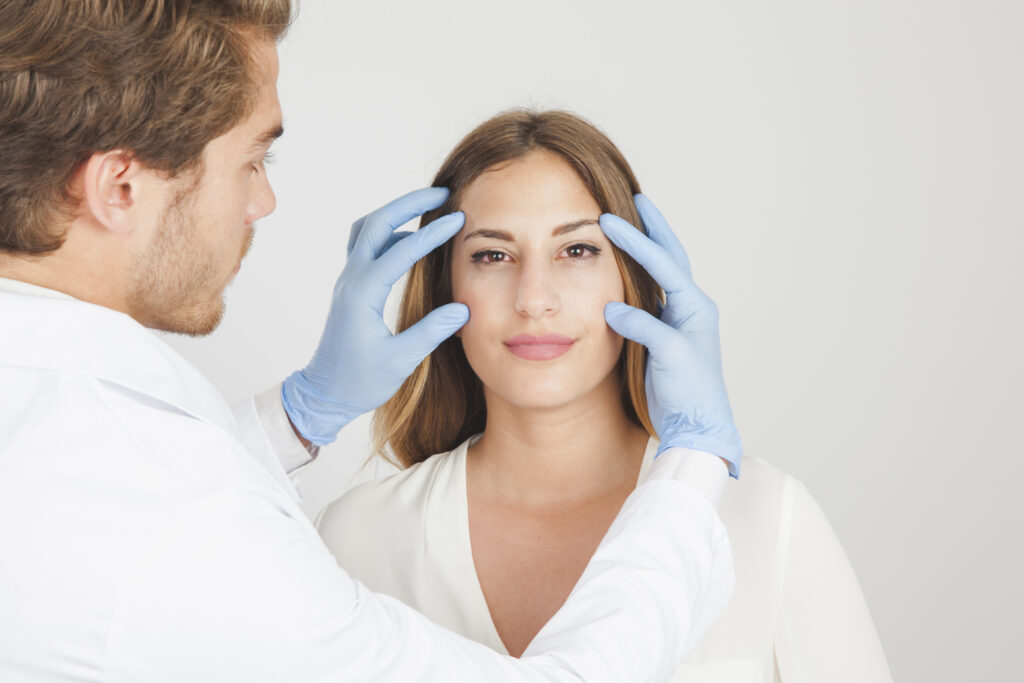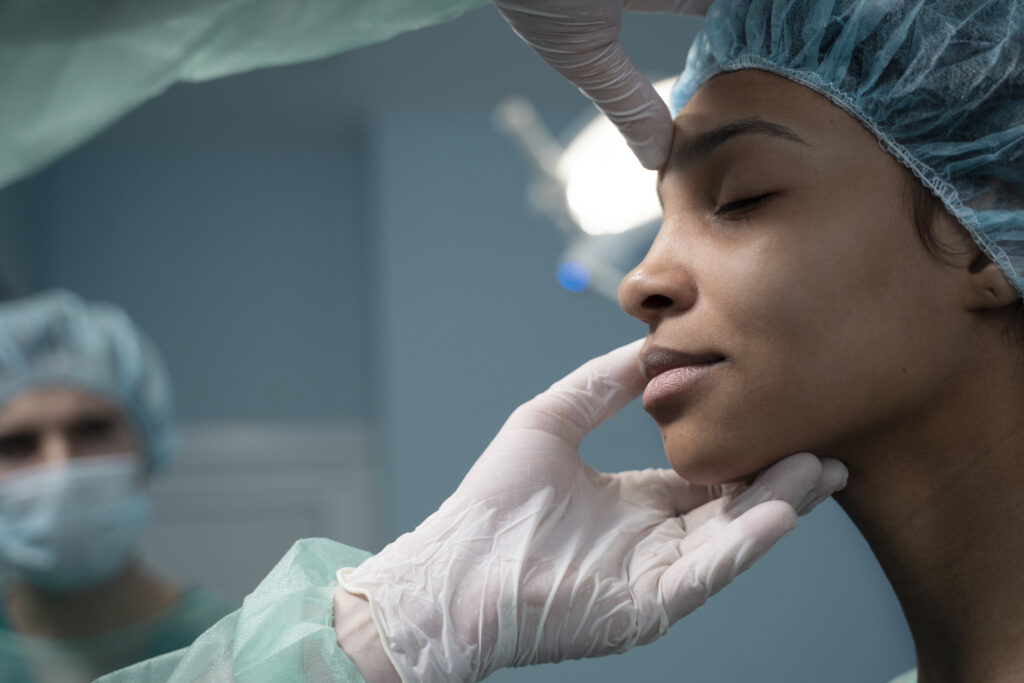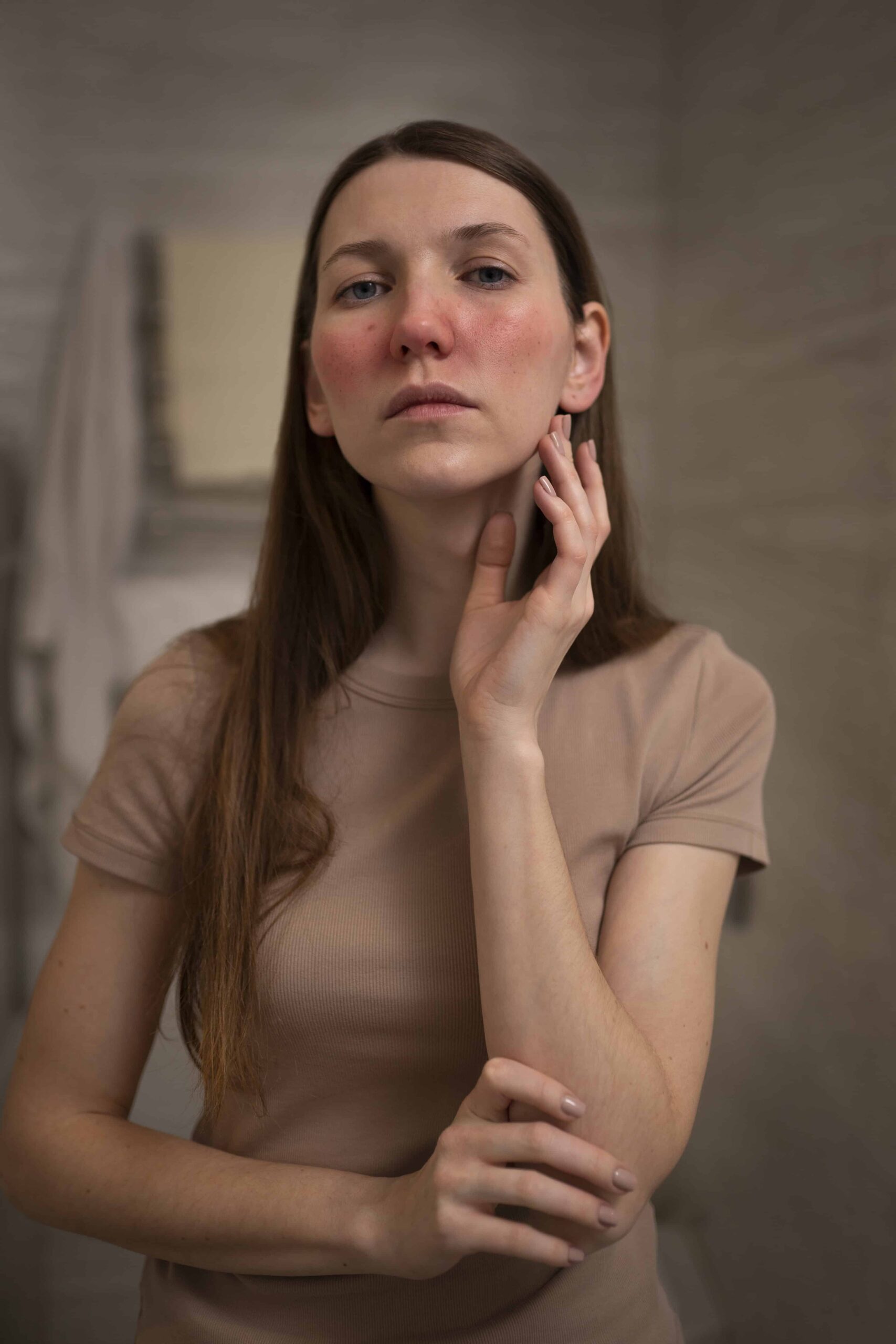If you’re wondering how to reduce swelling of face after rhinoplasty, you’re not alone.
Post-operative inflammation and facial edema are common parts of the nose surgery healing journey, with the right approach, you can speed recovery and reveal your refined nasal contours sooner.
At Dr. Cem Altındağ’s clinic in Istanbul, one of the top nose surgery clinics in Turkey, you’ll benefit from personalized care that balances state-of-the-art surgical skill with evidence-based post-op protocols.
Whether you’re seeking an affordable rhinoplasty in Turkey or simply want to learn expert tips for reducing facial puffiness, this guide will walk you through proven strategies to tame post-rhinoplasty swelling, support natural lymphatic drainage, and keep inflammation under control.
Let’s dive into the essentials that will help you look and feel your best as you heal!
Understanding Post-Rhinoplasty Swelling
Before diving into reduction techniques, it’s vital to grasp why swelling occurs and how long it typically lasts. Properly timing your interventions, like cold compresses or lymphatic massage, depends on recognizing each phase of postoperative inflammation.
What Causes Swelling After Rhinoplasty?
Swelling after nose surgery is your body’s natural inflammatory response to tissue trauma. When Dr. Cem Altındağ reshapes cartilage, bone, and soft tissue, tiny blood vessels become more permeable. Immune cells flood the area to clear debris and build new tissue, releasing chemicals (histamines, cytokines) that increase fluid accumulation, known as facial edema.
Factors such as the invasiveness of the technique, individual healing tendencies, and skin thickness can all influence how pronounced post-rhinoplasty swelling becomes. Understanding this process is key to effectively managing inflammation and optimizing rhinoplasty edema reduction.
Typical Swelling Timeline
| Time Period | Swelling & Recovery Notes |
| Days 1–3 | Peak puffiness, bruising around eyes, pronounced congestion. |
| Week 1 | Significant edema under splint; head elevation essential. |
| Weeks 2–4 | Marked reduction; emerging nasal contours become visible. |
| Months 2–3 | Mild residual swelling; cleared for glasses & light exercise. |
| Months 4–6 | Continued softening; subtle tip puffiness may linger. |
| Month 12 | Final results; nearly all swelling has resolved. |
Every healing journey is unique, but this average timeline helps you plan your aftercare. Tracking your progress against these milestones ensures you apply the right techniques, cold therapy, compression, or massage, exactly when they’re most effective.
If swelling persists beyond these stages, discuss it with Dr. Cem Altındağ during your follow-up.
Top 7 Home Strategies to Minimize Swelling after Nose Surgery

When it comes to how to reduce swelling of face after rhinoplasty, consistent home care is your first line of defense.
These seven strategies target post rhinoplasty swelling through simple, yet effective, at-home interventions. Follow them carefully during the critical early weeks to help your nose heal beautifully and comfortably.
1. Keep Your Head Elevated
Keeping your head elevated above heart level reduces fluid pooling in nasal tissues.
For the first 5–7 days post rhinoplasty, sleep with:
- Two to three firm pillows (or a wedge pillow)
- A recliner chair set to a 30–45° incline
Elevating your head not only eases congestion but also accelerates drainage of excess fluid, minimizing facial edema and bruising.
2. Apply Cold Compress
Applying cold compresses is one of the most effective ways to curb early swelling.
During the first 72 hours after nose surgery:
- Wrap ice packs or frozen gel pads in a thin towel
- Apply to the nasal bridge and cheekbones for 10–15 minutes every hour while awake
- Avoid direct skin contact to prevent frostbite
Cold therapy constricts blood vessels, reducing inflammation and numbing discomfort without affecting surgical dressings.
3. Wear Your Nasal Splint
Most surgeons, including Dr. Cem Altındağ, recommend wearing your nasal splint or gentle compression garment continuously for the first week.
These devices:
- Stabilize nasal bones and cartilage
- Prevent fluid accumulation
- Support proper tissue remodeling
Follow your surgeon’s instructions on when to transition to silicone strips or lighter compression at night to maintain optimal edema control.
4. Combine Anti Inflammatories with Natural Remedies
Under your surgeon’s guidance, combine prescribed anti-inflammatories with natural remedies:
- NSAIDs (e.g., ibuprofen) during the first 5–7 days to manage pain and swelling
- Arnica montana or bromelain supplements starting 24 hours post-op to reduce bruising
- Vitamin C and zinc to support collagen synthesis
Always confirm dosages and timing with Dr. Cem Altındağ to avoid any interactions or bleeding risks.
5. Follow a High Protein Diet
What you eat can significantly influence swelling after rhinoplasty:
- Low-sodium, high-protein diet: limits fluid retention while providing building blocks for tissue repair
- Anti-inflammatory foods: berries, leafy greens, turmeric, and ginger
- Hydration: aim for 2–3 liters of water daily to help your lymphatic system flush out toxins
Avoid alcohol and high-salt snacks, which can exacerbate puffiness and delay healing.
6. Give Yourself a Massage
Around week two, light self-massage can enhance lymph flow:
- Wash your hands thoroughly.
- Using your clean fingertips, apply feather-light strokes from the bridge of your nose outward toward your cheeks.
- Repeat 5–10 times, once or twice daily.
This technique supports natural drainage of residual fluid and can be guided by a certified therapist for optimal safety.
7. Pay Attention to Your Sleeping Position
Quality rest is vital for tissue recovery after a nose job:
- Back-sleeping only: prevents accidental pressure on your nose
- Head-of-bed elevation: maintain through week four
- Short naps upright: in a recliner or with extra pillows
Avoid side-sleeping or bending forward, which can increase blood flow to the nose and worsen swelling.
By incorporating these cold therapy for nose surgery tips, head elevation tips, and mindful self-care routines, you’ll effectively manage facial edema and speed your recovery.
In the next section, we’ll explore advanced therapies and professional treatments to further support optimal healing.
Advanced Therapies & Professional Treatments for Rhinoplasty
Beyond home care, specialized interventions at a qualified clinic can accelerate your recovery and target residual edema more precisely.
Dr. Cem Altındağ’s Istanbul nose job clinic offers cutting-edge options that complement at-home routines for professional post rhinoplasty swelling reduction and optimal contour refinement.
Manual Lymphatic Drainage by Experts

Performed by certified therapists, manual lymphatic drainage (MLD) uses gentle, rhythmic strokes to stimulate lymph vessels, clearing fluid that contributes to lingering puffiness. Unlike self-massage, expert MLD:
- Targets hard-to-reach areas around the nose and cheeks
- Reduces inflammation more efficiently
- Improves tissue oxygenation and comfort
At Dr. Altındağ’s clinic, MLD sessions begin around week two of recovery, ensuring incisions have stabilized and maximizing lymph flow without compromising surgical healing.
Laser & Ultrasound Therapy
Non-invasive modalities like low-level laser therapy (LLLT) and therapeutic ultrasound can further diminish post rhinoplasty swelling by:
- LLLT (cold laser): Using specific light wavelengths to constrict blood vessels, accelerate cellular repair, and modulate inflammatory mediators
- Ultrasound therapy: Emitting sound waves that create micro-vibrations in tissue, promoting deeper fluid dispersion and collagen realignment
Typically initiated after splint removal (week one to two), these sessions are painless, require no downtime, and complement your existing cold therapy and massage protocols for enhanced outcomes.
PRP & Stem-Cell-Assisted Healing
Platelet-Rich Plasma (PRP) and stem-cell-enhanced injections harness your body’s own growth factors to speed recovery and reduce swelling after rhinoplasty:
- PRP Rhinoplasty Swelling Control: A small blood draw is spun to concentrate platelets, then gently injected around the nasal soft tissue to boost vascular repair and limit edema.
- Stem-Cell-Assisted Healing: Adipose-derived stem cells can be applied to encourage regeneration of microvascular networks, leading to more consistent de-inflation of the nasal tip and bridge.
These biologic therapies are ideal when mild swelling persists into months two and three, offering a personalized, minimally invasive path to your final, refined result.
By integrating expert lymphatic drainage, laser therapy rhinoplasty techniques, and PRP rhinoplasty swelling protocols, you’ll benefit from a holistic recovery plan that addresses every phase of healing, right here at one of the top nose surgery clinics in Istanbul.
When to Contact Your Surgeon
While some degree of post rhinoplasty swelling is normal, certain abnormal swelling signs warrant prompt medical evaluation.
Early intervention can prevent complications and keep your recovery on track. If you notice any of the following warning signs, don’t hesitate to reach out to Dr. Cem Altındağ’s team.
Warning Signs & Red Flags
- Severe swelling that worsens after week two: Persistent or increasing puffiness beyond the typical 2–4 week timeline
- Uneven or lopsided swelling: Noticeable asymmetry that doesn’t improve with ice or elevation
- Intense pain or fever: Pain spikes or body temperature over 38 °C (100.4 °F) may indicate infection
- Redness, warmth, or unusual discharge: Signs of cellulitis or abscess formation around the incision sites
- Difficulty breathing through the nose: Ongoing nasal obstruction not relieved by normal healing
- Color changes in the skin: Blue-gray or very dark bruising persisting past two weeks
If you experience any of these post rhinoplasty swelling complications, immediate consultation is essential to rule out infection, hematoma, or compromised blood flow.
How Dr. Cem Altındağ Can Help
Dr. Altındağ prioritizes personalized follow-up care to ensure your safety and comfort. When you contact Dr. Cem Altındağ, his team will:
- Schedule a same-day or next-day in-clinic assessment
- Perform a thorough examination and, if needed, ultrasound or endoscopic review
- Provide targeted interventions such as drainage, antibiotic therapy, or customized compression
- Adjust your post-op protocol to address any unique healing challenges
With Istanbul’s top nose surgery clinic just a call away, you’ll have expert guidance and advanced treatments whenever you notice red-flag symptoms, giving you peace of mind and confidence in your rhinoplasty journey.
How long does swelling last after rhinoplasty?
Most patients see peak swelling in the first 2–3 days. By week 2–4, around 70–80 % of facial edema subsides, revealing your refined nasal shape. Mild residual swelling—especially at the tip—can persist for 3–6 months. Final results typically emerge around month 12, when nearly all rhinoplasty-related puffiness has resolved.
Can I fly after rhinoplasty?
It’s best to wait at least 1–2 weeks before air travel. Cabin pressure changes can worsen facial edema and congestion. If you must fly sooner, use nasal saline sprays, stay well hydrated, and wear your head elevation pillow. Always discuss timing with Dr. Altındağ to ensure your splints and dressings are secure.
Which foods increase swelling?
High-sodium and highly processed foods promote fluid retention and can worsen post rhinoplasty swelling. Also limit:
Alcohol (dilates vessels)
Sugary snacks (can trigger inflammation)
Spicy foods (may increase blood flow around the nose)
Stick to a low-salt, nutrient-rich diet with plenty of lean protein and anti-inflammatory ingredients like berries, leafy greens, ginger, and turmeric.
When can I wear glasses again?
Most surgeons, including Dr. Altındağ, recommend waiting 3–4 weeks before resting glasses on your nasal bridge. If you need vision support sooner, use a lightweight frame, prop them on your forehead, or switch to contact lenses to avoid pressure that can impede proper tissue remodeling.


